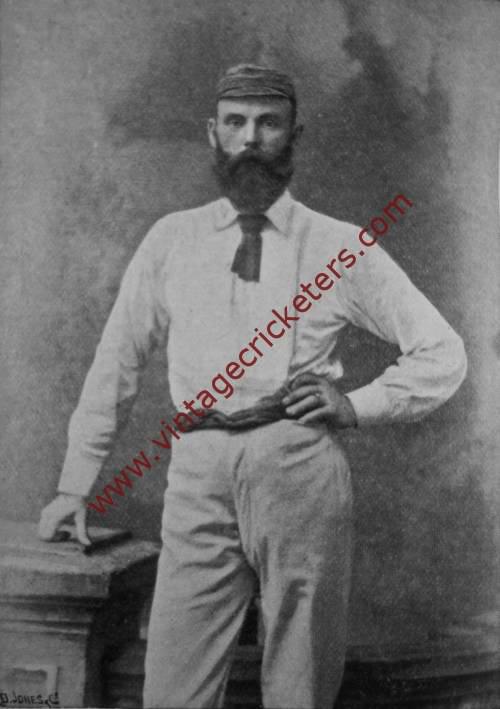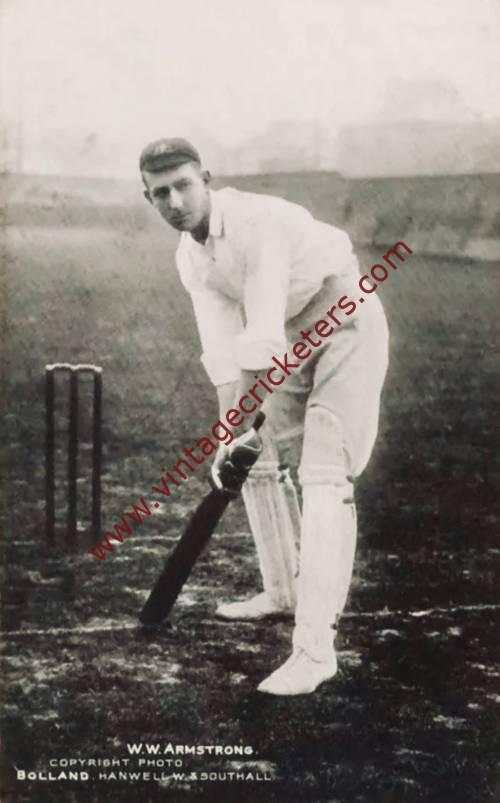Please choose your photo size from the drop down menu below.
If you wish your photo to be framed please select Yes.
Note: 16″x 20″not available in a frame.
Images can also be added to accessories. To order please follow these links
£8.95 – £49.95
Please choose your photo size from the drop down menu below.
If you wish your photo to be framed please select Yes.
Note: 16″x 20″not available in a frame.
Images can also be added to accessories. To order please follow these links
The maximum number of views of this element is reached.
Please contact the webmaster to enable unlimited views.
Sandhurst, Victoria born Billy Murdoch captained the Australian national side in 16 Test matches between 1880 and 1890. This included four tours of England, one of which, in 1882, gave rise to The Ashes. Although born in Victoria Murdoch was raised in Sydney, and played his Australian domestic cricket for New South Wales, making his first class debut in 1875. At the time he was regarded as the finest wicket-keeper in Australia (but at Test level kept wicket only once, with Jack Blackham being preferred) and a highly rated right-handed batsman. He played in the second Test match ever played, the March 1877 clash against England at the Melbourne Cricket Ground.
Murdoch established himself as one of the era’s greatest batsmen over the next few years, leading Australia in several Test series against England. He was widely regarded the finest Australian batsman of his day, being bettered only by the English champion, W.G. Grace. He became the first man other than W.G. Grace to score a first class triple century when, as captain, he made his career best 321 for New South Wales against Victoria at the Sydney Cricket Ground in 1882. The innings comprised 38 fours, nine threes, 41 two’s and 60 singles from all of ten Victorian bowlers. It was this knock which established him in the public reckoning as Australia’s finest batsman. So unvanquishable was he that Tom Horan (with whom Murdoch would share many a fine batting stand in the years to come) was reduced to bowling Leg Theory, the first known instance of that controversial tactic.
Murdoch was never far from controversy. His omission as wicket-keeper in the very first Test resulted in Australia’s premier fast bowler, Fred Spofforth, boycotting the match. In 1884 as captain of Australia he was involved in the players’ strike, where the Australian players refused to play unless they received a greater share of the gate takings. He was also the batsman whose contentious run out caused friction between New South Wales and a visiting English team led by Lord Harris, which also caused a spectator riot.
His best Test performances more often occurred in England where both his Test hundreds were scored, 153 not out in the first Test in the old country at The Oval in September 1880, and 211 at the same ground four years later. The former score was the first instance of a captain scoring a Test century, whilst the latter score was the first double-century made in Test cricket.
In 1878, Murdoch toured England and North America with Australia’s first representative cricket team, participating in a famous victory over a Marylebone Cricket Club (M.C.C.) side. On the 1880 and 1884 tours of England he led the Australian batting averages. In England, he was regarded as a superb captain and enough of a gentleman to be invited to captain Sussex, which he did for several seasons.
Murdoch was more of an off-side player whose drives and cut strokes were regarded as among the best of his day; but his leg-side play was reputedly not so strong, and his ability against good spin bowling was not as impressive as it might be. Also, he was believed to be lacking in command against top-class pace bowling on difficult wickets; if conditions, were perfect, however, his batting often followed suit.
He again visited England in 1890, and although he topped that season’s averages, he did not have an opportunity to regain his best form. He then settled in England, qualified for Sussex, and captained the County for several seasons, playing for them from 1893 to 1899. Along with former Australian Test teammate John Ferris, he represented his adoptive land against South Africa in Cape Town in March 1892, making him one of the few cricketers to represent more than one international team. It was the last of his 19 Test matches, in which he averaged 31.31 with the bat. Murdoch’s Test captaincy record for Australia was: 16 matches, five wins, seven losses, four draws. He also became the first substitute to take a catch in only the fifteenth Test match ever played – a feat he managed for the opposition.
His style of play did not favour him in wet seasons, but he made many good scores over a period of about 15 years. After finishing with Sussex he played with Grace for London County from 1900 to 1904, and among these was 155 for London County against Lancashire in 1903, and in the following year 140 for The Gentlemen against The Players, though he was then already 48 years old.
Murdoch’s standing as one of the greatest first class batsmen of his era are strengthened by his statistics; 16,953 runs scored in 391 matches at the average of 26.86, at a time when batting averages were much lower, scoring 19 centuries and 85 half centuries. He also took 218 catches and made 21 stumpings as a wicket-keeper.
Murdoch died aged 56 on 18th February 1911; having been present at the Test match between Australia and South Africa at Melbourne, he was seized with apoplexy during the lunch interval and died later in the afternoon. In 2019 Murdoch was inducted into the Australian Cricket Hall of Fame.
Vintage Cricketers was founded in July 2019. There are more photographs of this cricketer in the Vintage Cricketers library, which are due to be loaded in due course. In the meantime, please send a message to us using the contact form at the bottom left of this page and we can arrange to prepare and publish all images of this cricketer if you have a particular interest in him.
| Weight | N/A |
|---|



